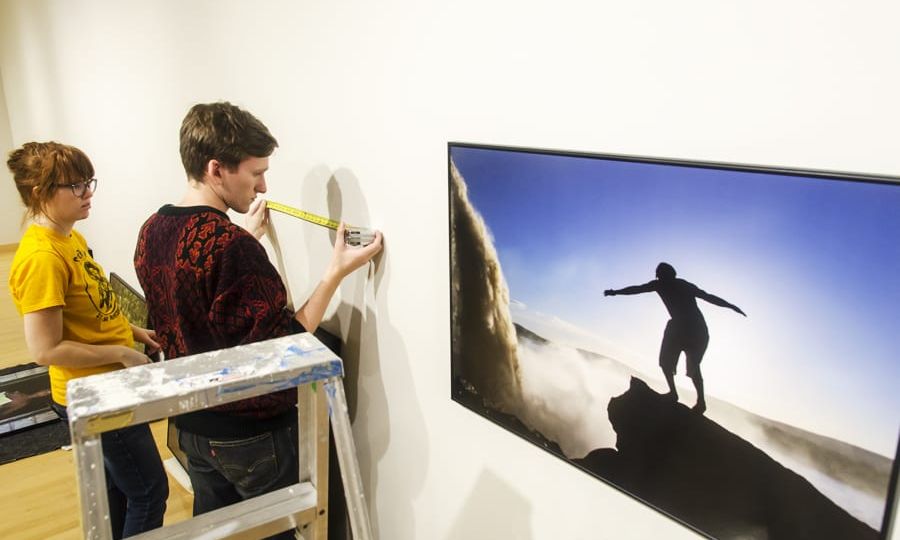
On Friday, Feb. 21, internationally-recognized conservation photographer Chris Linder will visit St. Olaf for the opening of an exhibition of his photography called “River Doctors: Taking the Pulse of the World’s Largest Rivers” in the Flaten Art Museum. Linder will give an artist’s talk in Dittmann Center 305 at 4 p.m., which will be followed by an opening reception from 5-6:30 p.m.
The photographs in “River Doctors” chronicle the effects of deforestation, land use and climate change on four major watersheds around the world – the Fraser, Kolyma, Amazon and Congo river basins – and scientists’ efforts to study these effects.
The title comes from a metaphor Linder uses to explain the importance of watersheds to the environment: Just as doctors determine the health of a person from samples of their blood, earth scientists learn about the health of the land from samples of river water.
Linder, who began his career as an oceanographer, now uses photography “to educate and inspire people about science and conservation,” according to his website.
“I would go out to sea on these expeditions participating as part of the science team,” Linder said, “and I’d see all of these great stories happening all around me, and I’d think, ‘Nobody really knows about this.'”
Now, Linder works similarly to an embedded photojournalist, living and working with teams of scientists in the field for an average of 100 days per year.
It was on one of these expeditions that Linder met John Schade, an Associate Professor of Biology and Environmental Studies at St. Olaf and a principal investigator with the Polaris Project, a collaborative climate change research organization in the Siberian arctic. Schade set the ball in motion for “River Doctors” when he approached Visiting Assistant Professor Jill Ewald, former director of the Flaten Art Musuem, with the idea of exhibiting Linder’s photography. He thought “River Doctors” would be appropriate for the St. Olaf community in part because of its interdisciplinary nature.
“John knows that the kind of work Chris is doing ties art and science together in this way that works really well on a liberal arts campus, where we’re trying to break down barriers between disciplines and do more collaborative, interdisciplinary work,” said Jane Becker Nelson ’04, who is in her first year as director of the Flaten Art Museum.
Final preparations for the show came together over Interim, when Becker Nelson worked with Annelise Brandel-Tanis ’14 on an independent study in curatorial practice. Brandel-Tanis, a studio art major concentrating in environmental studies, helped organize and prepare the show.
“The fact that I was also interested in the ideas of conservation photography and documentary art and environmental issues was completely coincidental,” Brandel-Tanis said, “so that was really exciting.”
Part of Brandel-Tanis’s work was to refine placards providing scientific background information for the photographs.
“The show is very didactic,” Becker Nelson said. “It’s meant to be a teaching show. It’s meant to be a totally concise experience, where a visitor could walk in not knowing anything, potentially, about rivers or river health or watersheds, but by following the chronology of the show clockwise, you would get this introduction to the subject.”
The show ends with a final panel calling museum visitors to action.
“Basically it turns the educational piece around and says, ‘If this is something you’re interested in, you can participate and help be a part of it just by collecting a small sample of river water and sending it in,'” Becker Nelson said. This facet, along with the extensive information and captivating photographs in the exhibit, fulfills Linder’s goal of both educating and inspiring.
“When I’m looking through the camera, my objectives are to try to figure out what essence of the project will engage people, broadly,” Linder said. “I want to bring people in.”
wilder@stolaf.edu
Photo Credit: ANDREW WILDER/MANITOU MESSENGER

